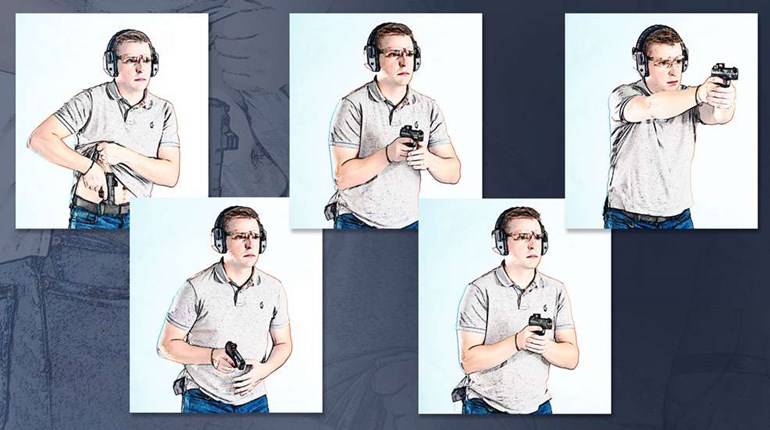
We often talk about studying mindset and preparing ourselves to deal with a deadly encounter. And, we have discussed the amount of stress that this puts on a person and how it affects one’s actions and decision-making process. What is rarely discussed is the need to stand down when that threat is no longer active or present.
A case I once studied involved a stranger forcing his way into a man’s home. The homeowner grabbed a shotgun and forced the apparently unarmed stranger to leave. The homeowner then called the police. That’s all good up to this point.
However, just as you or I would have done, the homeowner kept watch from his windows for the stranger. While the police were still on the way, he saw the stranger hanging around the homeowner’s pickup truck parked in the driveway. Taking his shotgun, the homeowner went outside to make sure that the truck wasn’t being vandalized or about to be stolen. At this point the stranger charged him, and the homeowner fired, killing the suspect.
This incident occurred some time ago, and I don’t know how this particular case was resolved. Regardless, it brings up several points that we, as armed citizens, should consider.
The first is the question of using deadly force to prevent theft or vandalism. The legality of such an act varies from state to state. And, the armed citizen is wise to find out what the state and local laws are in their jurisdiction regarding such acts. He or she also needs to know how those acts have been interpreted in actual court cases.
As a general rule, I believe this is a very difficult question. It is one thing to show a court and jury that we were face-to-face with a deadly threat and had no other choice but to use lethal force. In many locations, it might be much more difficult to show the judge and jury that someone had to die because our vehicle was in jeopardy. This is the kind of situation in which a person is well advised to seek the counsel of a criminal defense attorney prior to ever having to deal with the problem.
The other concern I have is to ask why this homeowner had to leave the relative safety of his home to go outside to confront the suspect. I once participated in a force-on-force class and had much the same experience. By instruction, I stepped out of the house and immediately observed suspicious activity—suspicious, but not threatening. Rushing out, I then confronted two “bad guys” and was able to successfully neutralize them. Our instructor complimented my shooting and then asked a question: “When you saw suspicious activity, why didn’t you just go back into the house and secure yourself?” Good question.
We not only have to turn on the mindset and fight mode, but we also must be able to turn it off when the threat is no longer there, or when we have safer alternatives. Incidentally, that is far more difficult than one would imagine.
Years ago, there was a case similar to the one above, where a homeowner armed himself and chased a knife-wielding suspect from his house. No problem. But, he then chased the suspect down the street for almost a block before shooting and killing him. That incident did not turn out well for the homeowner.
And, if you think letting the suspect get away is tough on armed citizens, it is doubly tough on those of us who have served as peace officers. Bad guys aren’t supposed to get away, a fact which I continually remind myself is no longer my concern. Catching bad guys is the job of the police, not the armed citizen or even an old retired country sheriff.
One of the best ways to prepare our minds for turning it off when the threat no longer exists is to play “what-if” games with family and friends. It is not really a game, but you bring up possible violent scenarios and discuss how to play them out. What are the various actions you could take? Is there a best action? At what point do you turn off fight mode?
Similarly, you imagine various types of attacks, in various locations. This helps a person formulate defensive plans for dealing with them and to consider all of the things that might happen and the various successful responses. These issues should also be discussed in the professional training classes that armed citizens are well advised to take advantage of.
The average citizen would look at these types of incidents and say you overreacted. They don’t understand the stress that a criminal attack can put on us. And, often, we don’t understand it either. Too often, we focus on turning it on and give too little thought to turning it off after a potential threat has been identified and dealt with. Be aware of that problem, study it and you are well on your way to dealing with it.


































